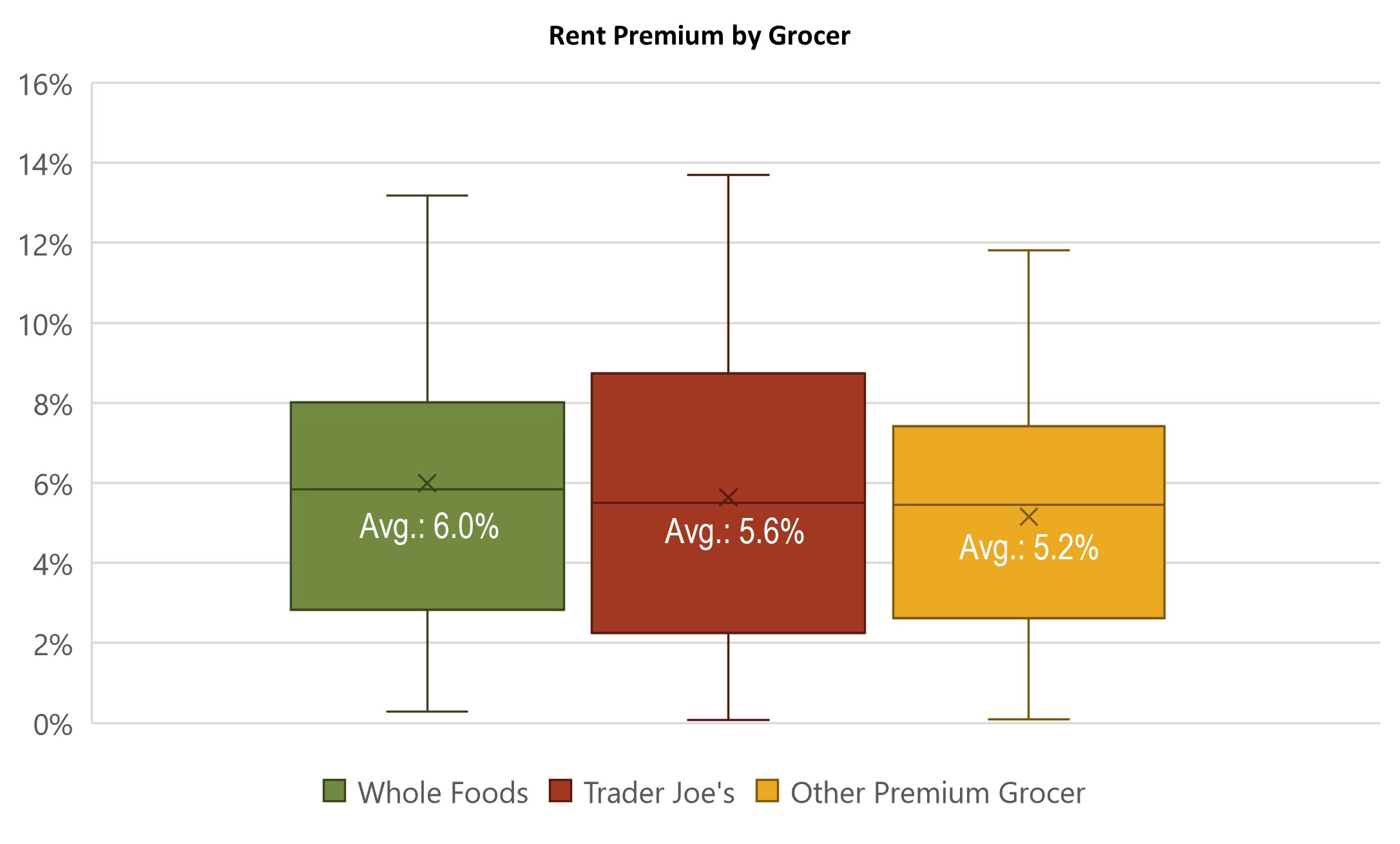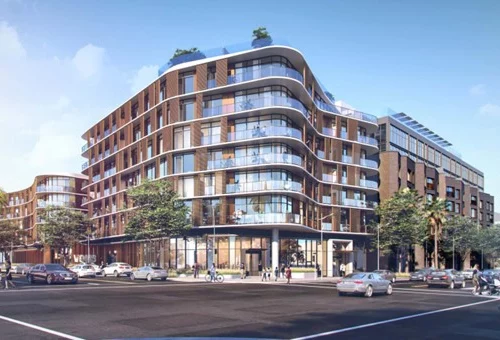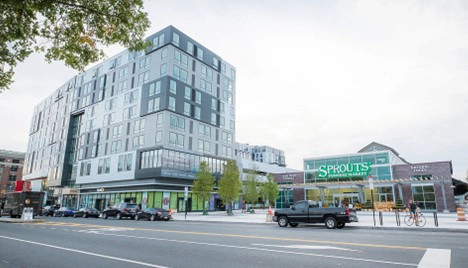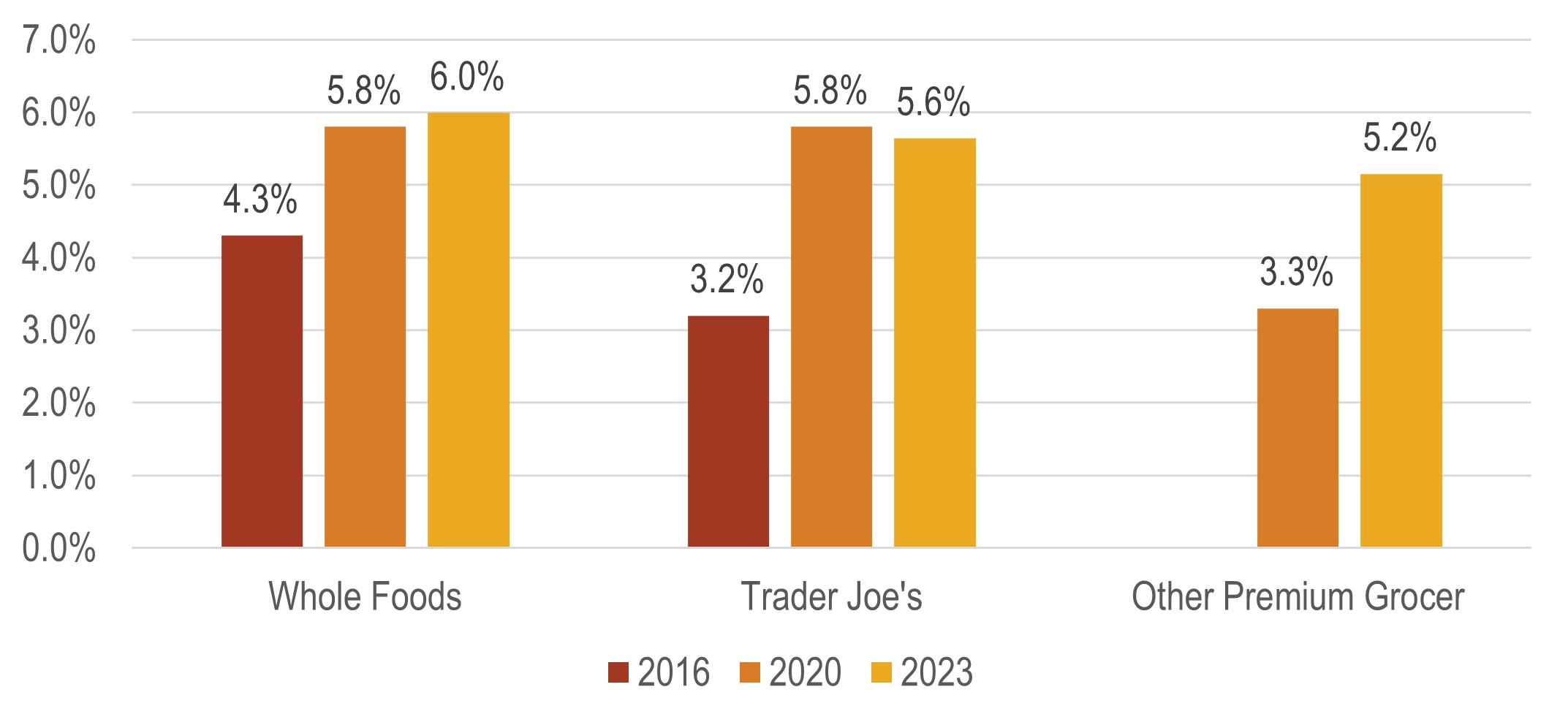Methodology
Overall Framework
In order to adequately measure the impacts of a ground-floor premium grocer on apartment performance, RCLCO relied on apartment performance data from Axiometrics for 90 apartment communities across 28 different MSAs, each of which offer an integrated grocer on the ground-floor. Each case study project’s performance was individually compared to the performance of two to five comparable apartment communities, which—barring the presence of a ground-floor grocer—represent the most comparable apartment product in terms of age, scale, quality of execution, and market positioning within the immediate local neighborhood of each case study.
This analysis sought to isolate the premium that is derived from the presence of a ground-floor premium grocer. Many apartment communities that contain a ground-floor premium grocer earn a noticeably higher premium relative to local comps. However, a meaningful share of this premium is due to the higher-quality unit finishes and amenities, rather than the impact of the grocer itself. By quantifying the premium for each unit finish and amenity, we were able to isolate the premium earned directly by the ground-floor grocer.
Rental Premium
RCLCO analyzed 37 apartment communities with a ground-floor Whole Foods tenant, 21 with Trader Joe’s, and 30 with Other Premium Grocers, located in 29 different MSAs and 71 submarkets across the nation.
After identifying each case study, RCLCO then selected between two and five nearby apartment buildings within each local neighborhood that were similar in terms of age, scale, type of construction (i.e. low-, mid-, and high-rise), quality of execution, and overall market positioning. We collected the average asking rents for each case study and comparable community. The rents at each comparable community were then adjusted for size (to allow apples-to-apples comparisons of rents), and further adjusted to control for other qualitative and quantitative differences between properties, such as building age, quality of location (measured using Walk Score and Transit Score), in-unit finishes and features, and quality and quantity of community amenities. The resulting adjusted rents for the comparable properties were then compared to the average rent in the grocer-anchored case study building. This methodology allowed us to make a quality-adjusted comparison, meaning that the resulting difference in rents between each case study and its comparable communities can be likely attributed to the impact of a ground-floor premium grocer tenant.
















